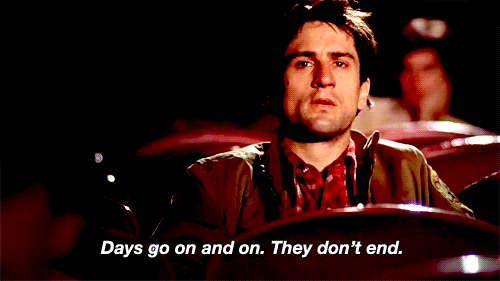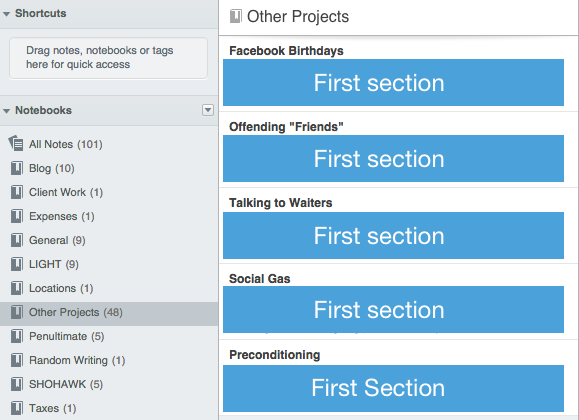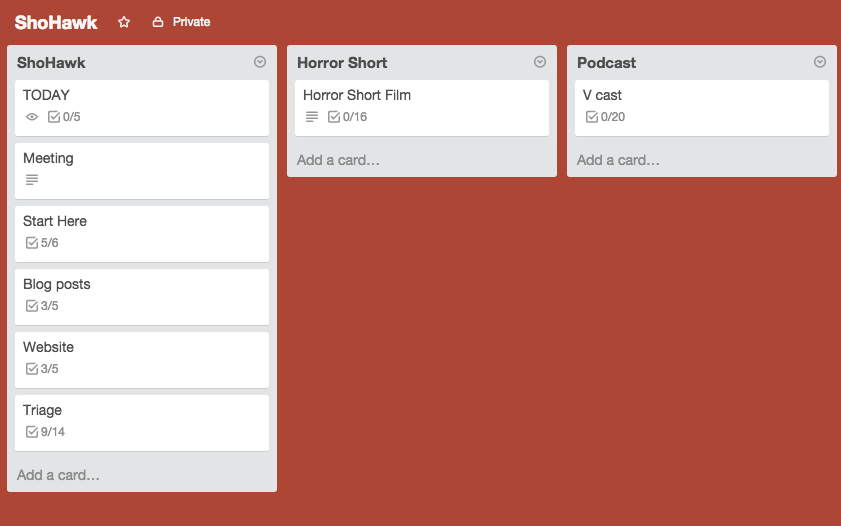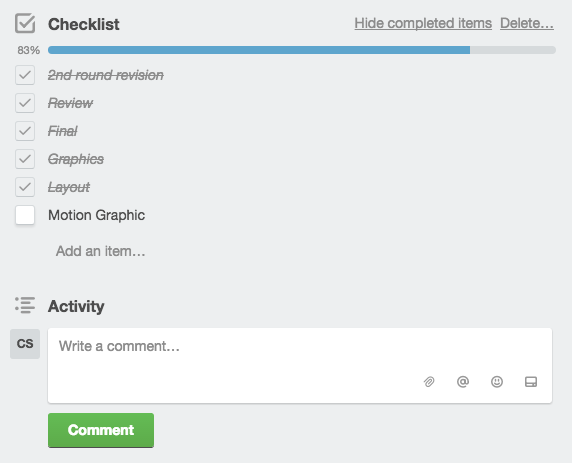What’s that nagging voice in my head, saying:
“You can edit in a couple hours. Just relax now—catch up on Orange is the New Black!” I bet you’ve had this same voice in your filmmaking career at one point.
MY FEAR AND THE LIZARD BRAIN
While I was editing my documentary, Light, I hit a rocky point. I was trying to generate structure from of 100 hours of raw footage. At some point in that process I stumbled upon the works of Seth Godin and his incredible lecture on The Lizard Brain.
In this 15 minute talk, Godin outlines the journey of a creative person and the limitations created within the brain that prevent many artists from completing work, or “shipping” (skip ahead to 9:02 for the Lizard Brain explanation, and/or watch at your convenience).
Godin posits creative limitations arise from the Amygdala, or “Lizard Brain,” which is the brain’s center for emotional responses (among other things). According to Godin (and modern science), fear of failure and judgment stifle creativity and productivity because they trigger primitive, fight-or-flight responses from the Amygdala .
I watched the talk over and over, showing it to everyone I knew. I had watched it enough to almost know it by heart, and it lead me to Godin’s other work: his blog, his books, and additional videos. I finally reached a point in consuming Godin’s library where I took a second, looked up, and realized: “I still have editing to do!”
My obsession with the Lizard Brain talk and Godin’s archives were—all at once—an attempt to combat this deep fear, and a thinly shrouded attempt to avoid confronting it.
Throughout your artistic life and career, you will frequently find reasons to avoid doing what you know you should. When the reasons for not “shipping” come from within, and not external forces, they generally arise from a place of fear: fear of doing something wrong, being mocked, wasting time on the incorrect move, failure, or even success.
Fear can be the ultimate motivator, but it can also be the biggest deterrent from ever finishing anything. Most of the time, you won’t even realize that fear is running the show. That’s why it’s important to safeguard against it and protect your art.
When I realized the Lizard Brain was in full force, I was able to prioritize my life, get back to work, and edit Light to completion! I used every practice listed here.
It’s sad to me how few creative people employ practices like these to keep fear at bay. Why not make life a little easier? Don’t worry: YOU’LL STILL BE CREATIVE! Hopefully these tips will help you avoid the black hole of fear’s ugly children: self-doubt and procrastination.
1. GET ORGANIZIZED

Nothing dials in focus better than organization, and focus is the antidote to fear.
If you’re stuck in the middle of a project, fear can take over when you’re faced with a whirlwind of possibilities. Being able to draw from ideas you’ve already had helps narrow options and progress you forward.
While I’m not a huge fan of outlining scripts, having well arranged research and concepts provides a pool of concentrated inspiration when you’re uncertain of what’s next.
I used to employ a series of color coded notebooks, until I was introduced to Evernote!
Evernote is simply the best FREE tool for organization I’ve ever used, and it has slowly replaced my old note-taking method. It allows the user to create a series of digital notebooks and organize notes within each.
I keep notebooks for everything from individual projects, to general story ideas I need to catalogue for later, and project expenses:
Within each notebook I keep a variety of content and, based on my needs at a given moment, I’m able to find it quickly and efficiently, when I need it. You can write down ideas or drafts, take and archive pictures (great for location scouting or receipts), save contact info, store links to websites you like, or keep that ongoing list of movies you want to eventually watch.
Here’s how notes display within my “Other Projects” notebook—a location for story and plot ideas, big and small:

The blue boxes labeled “First section” are covering the space below each note’s title, where Evernote lets you see the first few lines of each note. You can even share individual notes or notebooks with other collaborators!
Evernote has a few other awesome features: their partnership with Moleskine allows the user to hand write notes or draw pictures on a phone or tablet (great for storyboards and concept art) and then store them within the Evernote structure. They also have an amazing feature that translates your hand-written, photographed text into typed print! THE FUTURE IS NOW!
So, if you’re looking to get organized and take the guesswork out of what you’re doing, Evernote is a spectacular place to start!
2. KEEP LISTS
I never used to keep lists. I thought that was for suckers. But you know what’s funny about starting habits? Eventually you can’t live without them!
I fell in love with Tim Ferriss’, 4 Hour Workweek method: 4-5 bullet points on a sticky-note. Only add new items when you’re done with the first 4-5, and never go over that amount.
When I finish work at the end of every day, I make tomorrow’s list. This way, when I start in the morning, I have no reason to get distracted while wondering what to do? This also forces me to articulate and acknowledge what I must accomplish, then complete it because I’ll feel lame if something is still on the list at the end of the next day.
Anymore I am aimless without lists and fall apart quickly in their absence. Once you get in the swing of it, you’ll be more productive than ever before. But be aware: if I neglect it for a single day, I may derail myself for weeks or more. It becomes a crutch, so stay diligent. It’s worth it!
If you’re more in to digital organization—or you just hate paper—I highly recommend the app Trello. It’s great for keeping to-do lists and tasks organized in categories. You can even share lists or categories with collaborators!
Your tasks are organized by categories you create, much like Notebooks in Evernote. Here are my ShoHawk tasks, each broken into categories with individual lists within the white tabs:

As an example, when you click the white “Start Here” tab, it opens and shows the full list, each item you check off as complete, the percentage of your list you’ve completed, and a field for any comments you or collaborators wish to add:

There’s nothing more gratifying to me than seeing something I’ve finished get checked and crossed off a list. Trello is also FREE, so there’s no excuse not to try it!
3. KEEP ROUTINES
They give you predictability, and the more predictable your lifestyle is, the less you’ll have to sweat over each day. This buys you more time to focus on your tasks at hand. Combine speedy routines with comprehensive lists and you could cut your working time in half.
Then, it’s time for a new list, more work, and your afternoon/evening routines! BOOM: you just doubled productivity by not spending a half-hour deciding what to wear in the morning!
Some folks wear the same outfits daily or weekly. Some do the same workout at the same time every day. For me, making the exact same breakfast every day just starts things off right, and having a closet of clothes that match three or more ways reduces decision making in the morning. Sound neurotic? Maybe, but it took work to get this way and it helps tremendously!
Bonus for the routine: try applying this routinization to menial work tasks. If you’re a video editor and frequently edit the same type of content or programming, create a routine or formula for the process. It’ll double your productivity and speed!
While editing industrial series content, I’ve been known to outline and bullet point each step in the process. Then, I follow the bullet points for each step until they become second-nature.
At that point, I’m performing each aspect of the editing as efficiently as I know how, with robotic speed, freeing me up to focus more time on the important details, or fun stuff. Seriously: massive time saver!
4. TAKE 5
Give yourself at least 5 minutes at the beginning of each day to think about what needs to get done, and how you’re going to start. Emphasis on “how to start.”
The biggest mistake people make is focusing on the many “things to do,” without any concept of where to begin. More often than not, your brain becomes a swirling, Twister-like mess of obligations, which can make the strongest people crack and recoil into avoidance or procrastination. Unless you have an attack plan.
Focus on one thing that should logically come first in your day. Figure out why, and how you plan on beginning? Then, think of what should come next, with the same reasoning. And repeat. Soon enough, you’re off and running.
Once you’ve identified a starting point, the worst is over. Everything will fall into place a little easier.
BONUS: Turn these well-ordered to-dos into a list, obviously! 🙂
5. WHAT SCARES YOU MOST?
I’m afraid people will hate what I do? Maybe this project isn’t as good as the last? No one will ever hire me again, so I’m doomed to starve to death!
All of these fears make sense until you realize: Nothing, good or bad will happen unless you act. Not being hated isn’t the same as being liked. Your current project may be better than the last, and maybe this thing you’re doing will land you your next job.
Or maybe everything you feared would go wrong does? Then what? Short of starving to death (unlikely for most), none of those fears will require anything but time to heal and a little mind-over-matter!
The only definitive truth is that you’ll never know until you deliver. Procrastination, deflection, escape, avoidance, and anxiety are all reminders that fear may be running the show. So look the fear straight on and ask: why? What am I really afraid of?
Once you’ve done that, you’ve forced these imagined obstacles to explain themselves. If you keep wearing it down, you’ll quickly learn how to break through and get things done.
Most of the time, fear is too smart to let you know it’s there. But it’s also not smart enough to overcome your logic and discipline. For artists, it rears its ugly head when concerns or or questions about the future arise. Don’t let the fear answer them—beat it to the punch and stay one step ahead!
Thinking of a time when you overcame creative fears? Struggling to deal with them now? Tell us about it in the comments below. You’re definitely not alone!

Very inspiring
Glad to hear it, Ari! Stay inspired 🙂